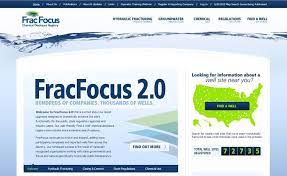From the Article by Kristina Marusic, Environmental Health News, May 18, 2023
Fracking companies used more than 282 million pounds of hazardous chemicals from 2014 to 2021 with no federal oversight, according to a new study.
The study, published in Environmental Pollution, is the first to examine the “Halliburton Loophole,” which exempts fracking from federal regulation under the Safe Drinking Water Act.
The provision, passed by Congress as part of the Energy Policy Act of 2005, was endorsed by then-Vice President Dick Cheney, who formerly served as the CEO of Halliburton. The company patented fracking technologies in the 1940s and is still one of the top suppliers of fracking fluids in the world.
The study found that from 2014 through 2021, 62% to 73% of reported fracking jobs each year used at least one chemical that’s categorized as harmful to human health and the environment under the Safe Drinking Water Act.
These chemicals include carcinogens like formaldehyde, arsenic and benzene; possible carcinogens like acrylamide and naphthalene; and ethylene glycol, which can damage the kidneys, nerves and respiratory system.
According to the study, the fracking industry reported using at least 250 million pounds of ethylene glycol, 10 million pounds of naphthalene, 1.8 million pounds of formaldehyde, 4.6 million pounds of acrylamide, 7.5 million pounds of benzene and 590 pounds of arsenic from 2014 to 2021, in addition to more than a dozen other chemicals regulated under the Safe Drinking Water Act.
Fracking, or hydraulic fracturing, extracts natural oil and gas from the Earth by drilling deep wells and injecting huge volumes of water and chemicals at high pressure. Previous research has shown that fracking chemicals can wind up in drinking water and impact human health. Only a handful of the toxic chemicals used by the industry are regulated in drinking water, and those that aren’t may not be filtered or monitored by public water utilities. The Environmental Working Group, a public health advocacy nonprofit, estimates that current levels of contamination in drinking water — most of which meet legal standards — could cause 100,000 cancer cases in the U.S.
“Because of the Halliburton Loophole and gaps in reporting, the environmental health and justice impacts of fracking aren’t being properly assessed,” Vivian Underhill, lead author of the study and a postdoctoral researcher at Northeastern University, told Environmental Health News (EHN).
Underhill said the quantities of these chemicals are likely an underestimate, since not all states require disclosure of fracking chemicals, and most states requiring disclosure allow companies to keep some chemicals secret if they say the mixtures are proprietary.
During the same time period, fracking companies reported using about 7.2 billion pounds of proprietary chemicals – more than 25 times the total mass of chemicals listed under the Safe Drinking Water Act that they reported. There’s no way to know what proportion of those chemicals are hazardous.
“We saw proprietary chemicals in 77% of disclosures in 2015, and that number was up to 88% in 2021,” said Underhill. “The use of trade secrets is steadily increasing, and that’s definitely concerning.”
A backroom deal with public consequences ~ The Safe Drinking Water Act regulates both public drinking water contaminants and the injection of toxic chemicals underground.
“It was Halliburton’s CEO who first and most strongly lobbied for this loophole, and that company is indeed benefiting most from this exemption today,” said Underhill.
Other industries that inject hazardous chemicals underground where they could contaminate water supplies, like mining and hazardous waste disposal, are subject to federal regulations under the Safe Drinking Water Act. The fracking industry is exempt from these regulations.
“The oil and gas program under the Safe Drinking Water Act was already weak, but the Halliburton Loophole gouged it even bigger for fracking specifically,” Erik Olson, an attorney, Safe Drinking Water Act expert and senior strategist at the Natural Resources Defense Council, told EHN. “Oil and gas wells are basically to be regulated by the states under a much more flexible oversight scheme, and those programs are very weak in many states with a big oil and gas presence.”
Previous research has demonstrated public health harms from this lack of oversight in states like Pennsylvania and Colorado.
The fracking industry agreed to publicly disclose some chemicals it uses in response to public concern about threats to water. But Underhill and Olson say those disclosures aren’t useful because of the trade secrets provision.
“This study shows us that there are a lot of very toxic chemicals being injected underground by this industry,” Olson said. “But it’s hard to say there’s any kind of meaningful disclosure if we still don’t know what most of these chemicals are or how toxic they are.”
Stronger fracking regulations ~ In light of their findings, Underhill and her coauthors are urging Congress to repeal the Halliburton Loophole and regulate the fracking industry under the Safe Drinking Water Act.
Olson is also in favor of closing the Halliburton Loophole. “This loophole was a backroom deal folded into legislation with no public debate, and they’ve never justified to the public why it’s needed,” he said. “That’s because it’s not needed. It was just raw political power that enabled them to get it enacted.”
Underhill and her coauthors are also urging Congress to pass a law requiring full disclosure of all chemicals used in fracking, including proprietary chemicals, and housing it in a centralized database with federal oversight.
The American Petroleum Institute, a trade association representing the oil and gas industry, opposes that idea. The organization’s “issue paper” on chemical disclosures for the fracking industry notes that fracking fluid producers have agreed to disclose details about proprietary chemicals to health care professionals, emergency responders and regulatory agency representatives “when it is appropriate.”
The paper acknowledges that trade secrets have caused concern, but concludes, “the compromise of limited disclosure when need is justified is a sound response. Protection of [intellectual property] rights is fundamental to the free market economy in which we all work and thrive.”
Making data on fracking chemicals more accessible
Researchers are just starting to figure out the cumulative impacts of the Halliburton Loophole because, until recently, it was difficult to obtain nationwide data on fracking disclosures.
The industry uses a site called FracFocus for public disclosures. While it’s possible to look at chemical disclosures for individual wells through the site, it’s virtually impossible to obtain data in a format that allows for large-scale analysis.
But a new, open-source program called Open-FF is changing that.
“I was trying to get information from FracFocus and I realized it’s not really a database,” Gary Allison, who developed Open-FF, told EHN. “It takes a lot of work to get the data to the point where you can actually use it.”
One issue was that FracFocus uses non-standardized names for companies and chemicals. For example, Allison had to account for more than 80 variations of the word “Halliburton” including misspellings, typos and abbreviations to make it possible to search the database for all chemicals made by the company.
“Before now, it was incredibly hard to download data from FracFocus that allows for systematic analysis or investigation,” Underhill said. “Now this data can finally be used effectively by researchers.”
Allison noted that anyone can use the program — not just scientists and researchers.
“Most people don’t have fluency in chemistry, so it can be really overwhelming to look at these data sheets and make sense of what’s happening,” he said. “I hope to get Open-FF to the point where members of the public can easily log into the site and find out what chemicals are being put into the ground near their homes.”
#####++++++#####++++++######
Information Released by Frack Focus on April 10, 2022
August 2021 – FracFocus is used as the only national regulatory reporting system for 27 Oil and Gas States. It contains over 184,000 disclosures with over 5 million chemicals records coming from more than 1,600 registered companies.
December 2021 – FracFocus design for the next version is ongoing with expected development of FracFocus 4.0 in 2022.
2023 – FracFocus 4.0 slated for release, enabling reporting of water used in hydraulic fracturing jobs by source and quality.
Note ~ “FracFocus is a victory for transparency and good governance, and an example of what is possible when the industry works with state regulators and environmental groups to solve urgent challenges in managing the local impacts of hydraulic fracturing. FracFocus remains one of the best national repositories of oil and gas data, and paves the way for a new era of open data in this field.” -– Adam Peltz, Environmental Defense Fund
#####++++++##########+++++######
Related: Fractured — The body burden of living near fracking


